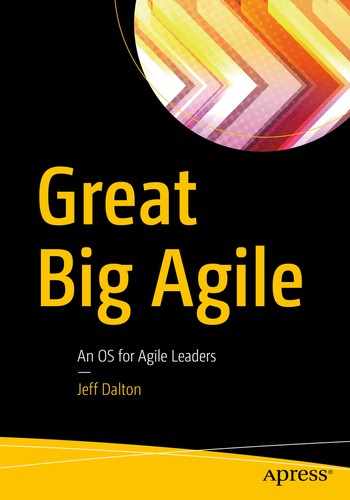Description
Big Room Planning (Scaled Agile Framework), sometimes called Release Zero (Agile CMMI), is a broadly attended, intensely focused stakeholder event, often lasting for two days or more, where long-term planning, interdependency identification, systems learning, organizational architecture, and the performance and planning framework for a successful program is established.

Typical Roles
Program Sponsor(s)
Agile Leader(s)
Team Members
Scrum Master (s)
Product Owner(s)
Systems Architect(s)
Marketing Team
Business Development Team
Desired Behaviors
- 1.
Prepare for the event with robust value stream / business process mapping.
- 2.
Develop a draft for an organizational structure that supports and promotes agile values. This could include: governance infrastructure that supports self-organization and relentless, continuous improvement; and a tool-chain that supports as much automation as can be afforded by the organization.
- 3.
Explore and document the organizational capacity and constraints that will impact the program using available productivity data.
- 1.
Identify, train, and coach potential leaders at all levels.
- 2.
Ensure all participants and stakeholders, especially leaders, are keenly aware of agile values, frameworks, and techniques, and understand the value of embracing an agile organizational architecture.
- 3.
Develop a product vision, and clearly identify expectations, outcomes, and a definition of done that considers systems, schedule, stakeholders, resources, finances, risks, and issues that should be uncovered and resolved
- 4.
Develop a clear, prioritized planning backlog.
- 1.
Using the vision, backlog, and organizational capacity as a guide, begin cross-functional planning with the aid of one or more facilitators or scrum masters.
- 2.
See Chapter 72 on Visual Information Management for guidance on sharing all planning, risks, and issues for the entire group to aid in information transference, transparency, and collaboration.
- 3.
See Chapter 41 on Open Space Technology for more information about succeeding in an environment where the outcomes are unclear.
